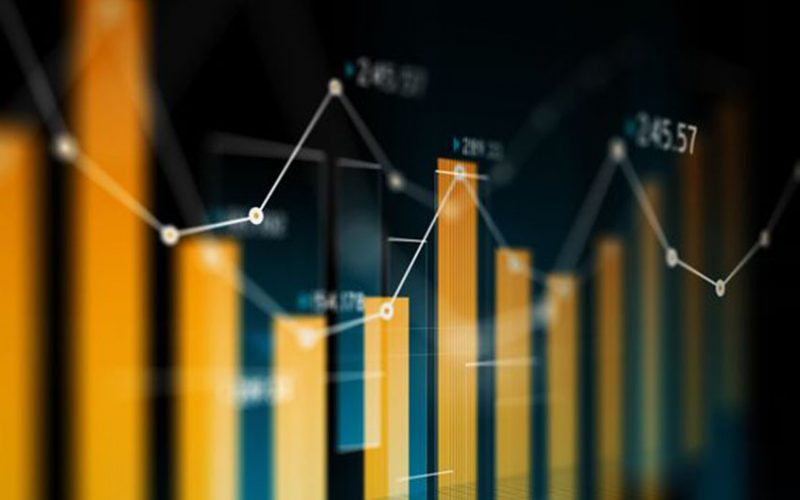by Hubert Marleau, Market Economist, Palos Management
The stock market has been on a tear as the driver shifted from multiple expansion to earnings growth. The S&P 500 hit its 52nd all-time of the year. It pulled back on Thursday as the quants had anticipated but recovered energetically on Friday because Powell’s address was inoffensive. The benchmark closed at 4509 by the end of the week, registering a 67-point gain for a 1.5% weekly increase.
Fortunately, retail investors with savings as well as professional money managers with unbalanced portfolios and corporations with buyback intentions have sufficient cash reserves to fight the algorithms. The latest ICI data shows that there’s still more than $4.5 trillion parked in idle money market funds. As a group, they can afford to step in each time there is a market dip, smoothing out volatility. The VIX index was 16.39–a low point for the month. Meanwhile, many formerly bearish market strategists have capitulated to become constructive about the market--even adopting the idea of long-duration growth for stocks. The State Street Investor Confidence Index jumped 8.9 points to 110.1. Specifically, Wells Fargo’s strategists lifted their year-end target for the broad market to 4825 from 3800 while those at UBS set a price target of 5000 for the end of 2022. Generally, market forecasters have decreased P/E valuations to 20 times but are projecting per-share earnings of $245 for 2022.
The dynamics of the market are not complicated. Investors are pretty much set in their ways when it comes to investments. Stock market performance is about the direction of bond yields, (which has a lot to do with inflation), and about growth prospects, (which has a lot to do with employment and productivity). Every other factor is of lesser importance except monetary policy which is considered to be essentially exogenous. Put simply, one needs to watch for growth scares, inflation concerns and/or policy mistakes. Getting the latter right is what is complicated--not so much the economy.
The increase in the level of economic activity is moderating. The Economic Surprise Index-score that measures the degree to which economic data is beating or missing estimates-is now lower than it has been for 80% of its entire history. That is happening because the economy cannot grow at a feverish pace forever. Nonetheless, it remains on course for robust growth. In addition to high personal savings, personal income is rising as more and more people get jobs: two factors that should prime the economy going forward. The NowCasting models of the Atlanta and New York Feds are respectively forecasting 5.1% and 3.8% real GDP growth in Q3.
This expected slowdown from peak growth is not only natural at this stage of the cycle but probably beneficial. It should bring the economy back to a more equilibrated pace by helping companies to heal the pains of bottlenecks in the supply chain. Inventories might seem a boring cog in the economy where in normal times, rising inventories-to-sales ratios are a cause for concern, but not this time. Higher industrial production, combined with lower retail sales, could be the breather producers need to replenish stockpiles, and for retailers to restock their shelves. Moreover, it would give them time to turn the pandemic blip in productivity into a lasting digital, technological and organizational change. On that last point, a new University of Chicago study, written by Stephen J. Davis, has introduced the notion that “working from home” is here to stay, that the potential for a productivity payoff is enormous, and that the positive consequences are indefinite. Libby Cherry, a Bloomberg research analyst, found that a day at home lifts U.S. productivity by 4.8% and boosts efficiency by 13%.
On Friday, the Fed Chair Jerome Powell gave a speech at the Federal Reserve annual symposium in Jackson Hole. This venue is the most significant event of the year for the Fed because it sets the stage for the coming year. In this regard, the address will be scrutinized for clues over the coming weeks for what will come next in terms of objectives, principles and conduct of monetary policy. And this comes at a time when pandemic scars, climate change, social inequalities, civic differences and geopolitical issues are likely to have long-term effects on the economy. Policy will definitely be much harder to plan and implement because there is a lot of academic, business and investor disagreement. Thus, choices will be politically driven and therefore come with many risks, making the decision process difficult.
Jerome Powell thankfully provided, in a relaxed fashion, some clarity. He said: “The Fed could start scaling back stimulus this year and begin to taper bond purchases in the coming months if the path of the economy stays on track, adding that there was no rush to hike interest rates.” He telegraphed what the market wanted, offering something to everyone. There was nothing here to cross investors. Stock prices ran up, bond yields declined, the dollar fell and commodity prices firmed.
Although he ardently insisted that the recent surge in the inflation rate was temporary, the risk of a policy mistake still exists. Indeed, not everyone agrees that inflation is well anchored. Larry Summers thinks Powell is too serene. Perhaps he is right. Time will tell. At this moment in time, I’m siding with Powell.
On Friday, bond traders aggressively raised their inflation expectations 24 bps in one day for the next five years to 2.63% and to 2.15% for the following five years. These numbers must be watched carefully. The Wall Street Journal reported: “The Office of Management and Budget expects consumer prices to rise 4.8% in Q4 from a year earlier, double the 2% rise that it expected last May. These officials see those price pressures quickly abating next year, with the consumer price index rising 2.5% in Q4 of 2022, more than the 2.1% they anticipated in May, and reaching 2.3% in 2023.” In my judgement, investors will be watching for inflation numbers and attentively observing how they will unfold in real time. The narrative over the next few months will not be about the forthcoming tapering, but about the performance of inflation.
Copyright © Palos Management
















